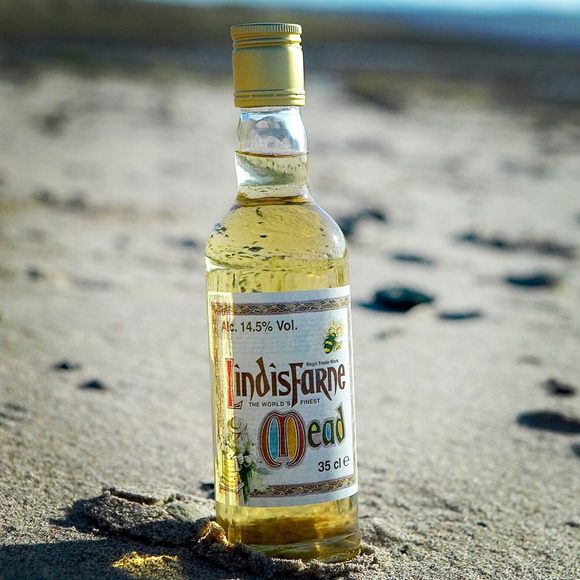It’s only fitting that Holy Island produces one of the finest examples of the “nectar of the gods.” Lindisfarne, one mile off the northeastern English coast, has been known for its mead since the medieval era.
Though the island’s history is a bit murky, its first mead-makers were likely monks. St. Aidan founded the local priory in the 7th century, and it was from here that Christianity spread to the rest of England. When the monks weren’t sharing the word of God, it’s thought that they turned to the art of making mead to keep themselves busy on the isolated island.
Since the specifics of the monks’ work, especially their recipe, have been lost to history, modern producers at the island’s appropriately named St. Aidan’s Winery have looked to ancient Rome for cues on making their mead. Starting with a fermented honey base, they add aromatic herbs, fermented grape juice, and water drawn from a local artesian well. A neutral spirit fortifies the final mixture.
While the well water gives the beverage a bit of local flavor, it’s the addition of grape juice that sets Lindisfarne’s apart from other meads. While most varieties are incredibly sweet, the acidity from the grapes cuts through this sweetness, resulting in a honey wine with a more refined dry-sweet balance.
In addition to its traditional mead, St. Aidan’s makes blood orange and spiced versions. For those who would rather eat their alcohol, they also sometimes produce mead-based chocolate truffles and jams.
Where to Try It
-
St. Aidan's Winery
Holy Island, Berwick-upon-Tweed, TD15 2RX, United Kingdom
Written By
 jwalker
jwalker
Sources
- www.lindisfarne-mead.co.uk/
- news.bbc.co.uk/2/hi/uk_news/england/tyne/6080250.stm
- munchies.vice.com/en_us/article/ezk5ga/this-tiny-island-is-still-making-mead-the-medieval-way
- books.google.com/books?id=FBMLFM305MEC&pg=PA213&dq=mead+lindisfarne&hl=en&sa=X&ved=0ahUKEwib3ObtktnaAhWouVkKHQG0ApkQ6AEIOTAD#v=onepage&q=mead%20lindisfarne&f=false
- www.amazon.com/Hive-Story-Honeybee-Us/dp/0312371241/ref=sr_1_1?ie=UTF8&qid=1524788763&sr=8-1&keywords=the+hive+bee+wilson
- books.google.com/books?id=XmE9DQAAQBAJ&pg=PA8&dq=mead+%22nectar+of+the+gods%22&hl=en&sa=X&ved=0ahUKEwiumui1mNnaAhUGr1kKHeqvBpEQ6AEILDAB#v=onepage&q=mead%20%22nectar%20of%20the%20gods%22&f=false















